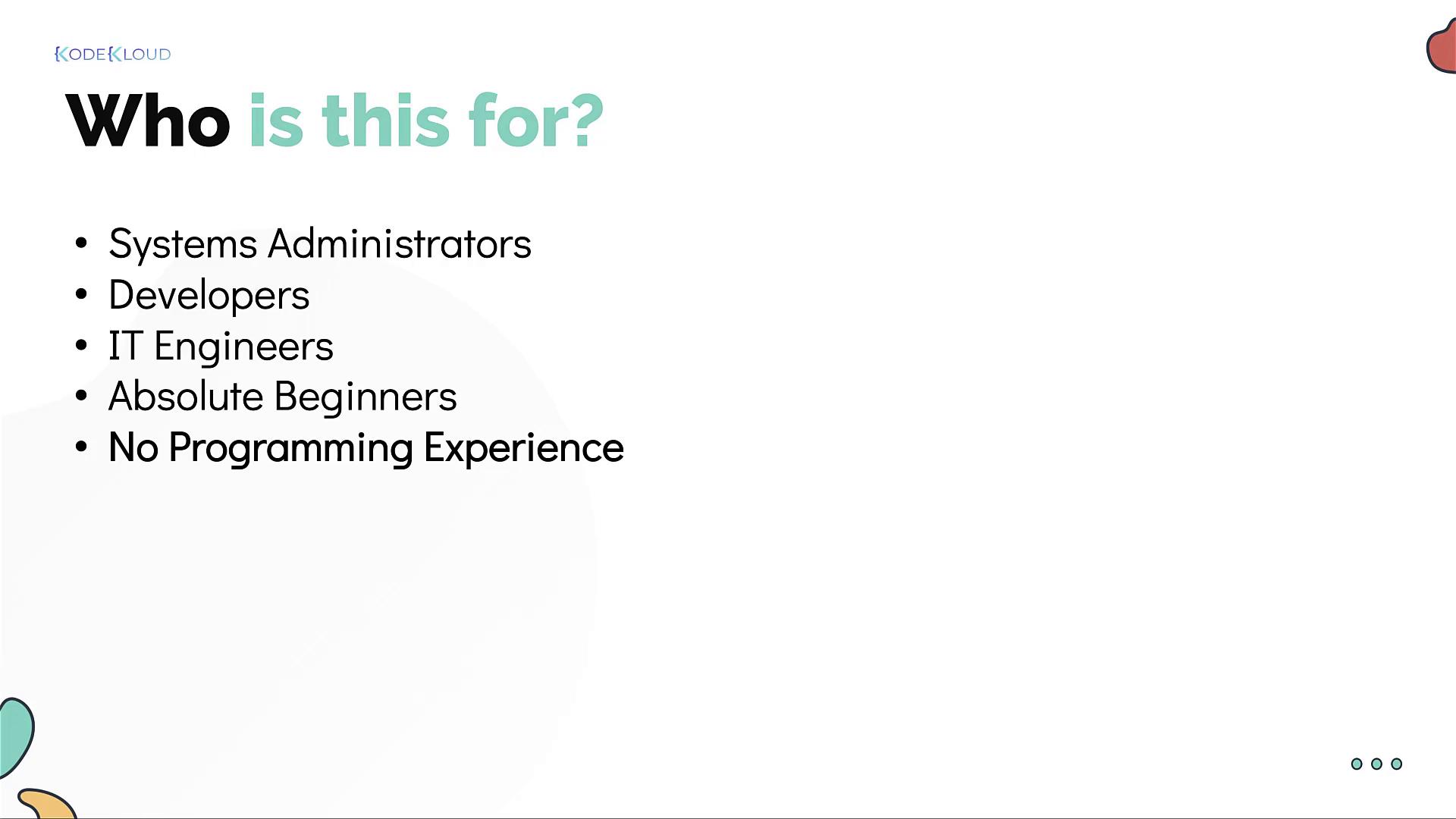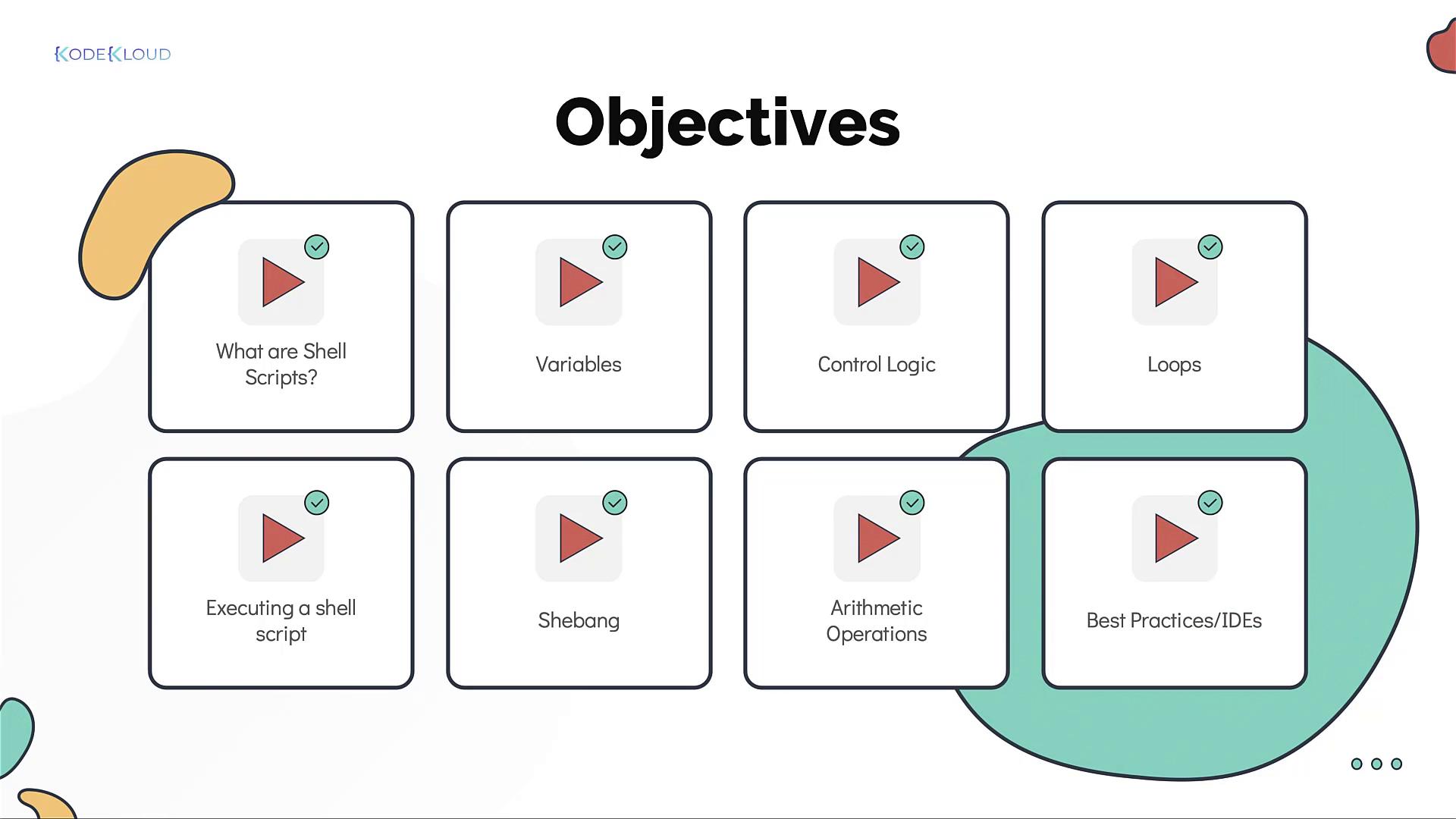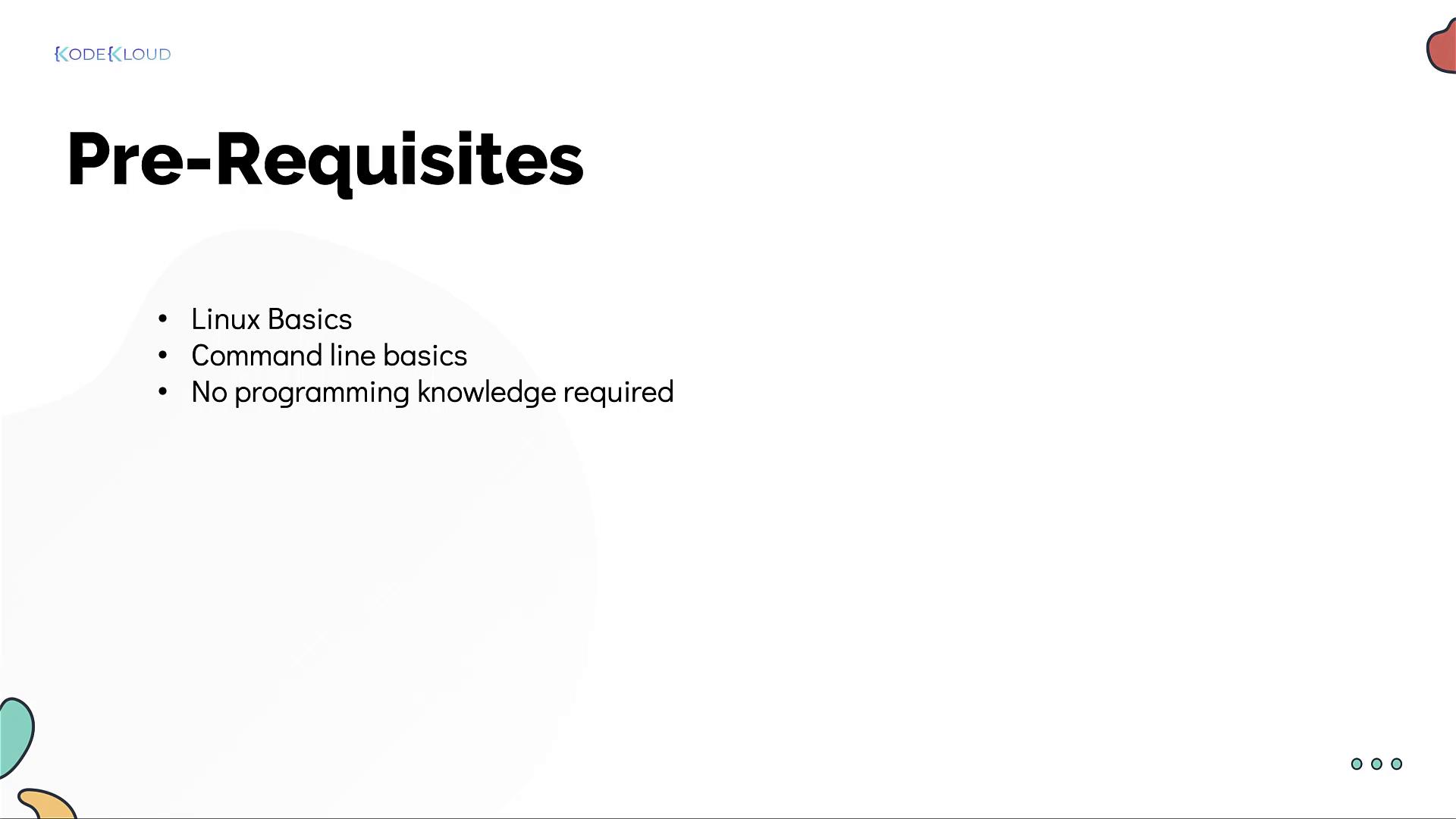Shell Scripts for Beginners
Course Introduction
Course Introduction
Welcome to the Shell Scripts for Beginners lesson! I’m Mumshad Mannambeth, and together with Vijay Pallari, we will guide you through the fundamentals of shell scripting.

Shell scripts in Linux provide a powerful means to automate repetitive or complex tasks, a significant advantage for system administrators and IT professionals. Automating daily tasks such as system backups, software installation and updates on multiple servers, or routine system monitoring (e.g., checking memory, CPU, and disk usage) can boost efficiency and reduce errors.

Shell scripting is also excellent for performing regular audits, such as identifying logged-in users, tracking user activities, detecting resource-intensive processes, or scanning multiple log files to diagnose issues.
This course is specifically tailored for beginners—whether you're stepping into programming for the first time or you're an IT engineer or system administrator looking to enhance your automation skills. We present these core concepts using engaging examples, like a space station launching missions to explore the universe.

Throughout the course, you will work with real-world scripts and participate in hands-on labs that reinforce each concept. After each topic, you’ll have the chance to test your scripts and receive immediate feedback to ensure your solutions run as expected.
In the upcoming sections, we will dive into the basics of shell scripting, covering topics such as:
- Creating your first script and making it executable.
- Utilizing variables effectively.
- Implementing control logic with conditional statements.
- Employing loops like for loops and while loops.
- Performing arithmetic operations.

We will also highlight industry best practices for developing robust shell scripts, including tips for writing reusable code and avoiding common errors. Additionally, you will be introduced to popular IDEs and utilities that further enhance your workflow.
Note
Before you begin, ensure you have a basic understanding of Linux and command-line operations. For a comprehensive introduction, consider enrolling in our Learning Linux Basics Course & Labs. No prior programming experience is required.
Let’s get started with an exciting and informative lesson. I look forward to seeing you in the first lecture.

Watch Video
Watch video content